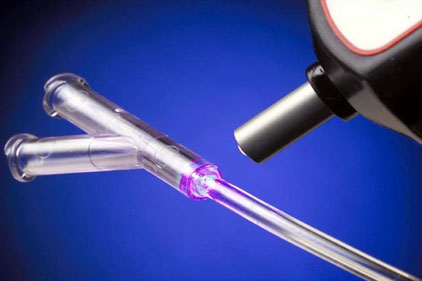Medtronic Inc. is a leading manufacturer of catheters, defibrillators, pacemakers, stents, valves, surgical instruments and other medical devices. The company operates state-of-the-art assembly plants around the world.
ASSEMBLY recently asked Greg Johnson, Medtronic's senior director of process solutions, to discuss his company’s lean manufacturing philosophy.
ASSEMBLY: How long has Medtronic been on its lean journey?
Johnson: Broad application of lean tools started in 2003, but pockets of lean existed well before that. In 2009, we moved from a tools focus to a much more robust operating system engaging the organization beyond the tools and into daily behaviors and mindsets.
ASSEMBLY: How has lean manufacturing transformed Medtronic?
Johnson: The most tangible results are a $330 million reduction to cost of goods sold from 2007 to 2012. We anticipate an impact of $450 million between 2012 and 2017. More importantly, lean has accelerated our rate of improvement and our ability to find and solve problems.
ASSEMBLY: Can you provide a few examples of how Medtronic approached manufacturing before and after its lean transformation?
Johnson: Most of our “before” processes were very typical batch processes, often pushed through functionally organized areas. Many workflows were organized into long production lines with workers attending machines, and batches queued up between steps. Small abnormalities in the process might go unnoticed, and quality was ensured through final inspection late in the process. These workflows were slow to respond to changes in demand, less efficient, and often did not engage team members effectively in improving their work.
Our higher maturity workflows (usually organized in small cells) are very effective at engaging team members, and they drive organic improvement at a rate of 3 percent to 5 percent per year. The workflows have tight standardized work; disciplined standard WIP; team members disconnected from machines while they cycle; and are designed to expose and address abnormalities at the source. They are increasingly focused on in-station quality, much more flexible and significantly more efficient. Often, footprints are reduced by 50 percent and productivity is increased by 40 percent during a transformation.
ASSEMBLY: What has been the biggest advantage of “going lean”?
Johnson: In my opinion, the biggest advantage has been unleashing the talent of Medtronic to improve their work. We have seen business benefits on both the top and bottom line.
ASSEMBLY: Does intense regulatory pressure make it more difficult to implement lean principles in the medical device industry?
Johnson: I’m not sure it is more difficult, but it can be slower. One of our operating system principles is Scientific Thinking. It is very important that we apply proper rigor before making changes in production in our industry. Thus, change often happens a little more slowly in our industry, as we are very careful about changes and variability in our work.
ASSEMBLY: Can you share any tips or advice for other manufacturers that may be further behind Medtronic on their lean journeys?
Johnson: My primary advice for leaders is to ensure constancy of purpose with your lean journey. Ensure it is aimed at fulfilling your mission, steeped in principles, applied across the entire flow of value, and, most importantly, engaging your team members in the responsibility of improvement. Too many organizations apply a few tools and think they are doing lean. To us, lean is much more than the tools.
Lean Manufacturing Transforms Medtronic


